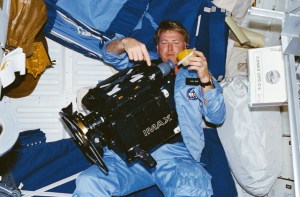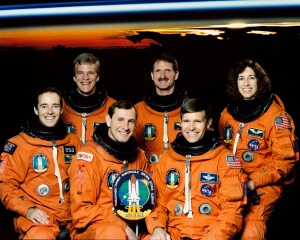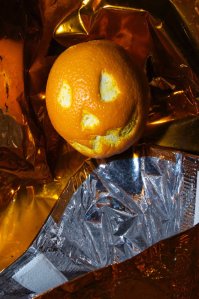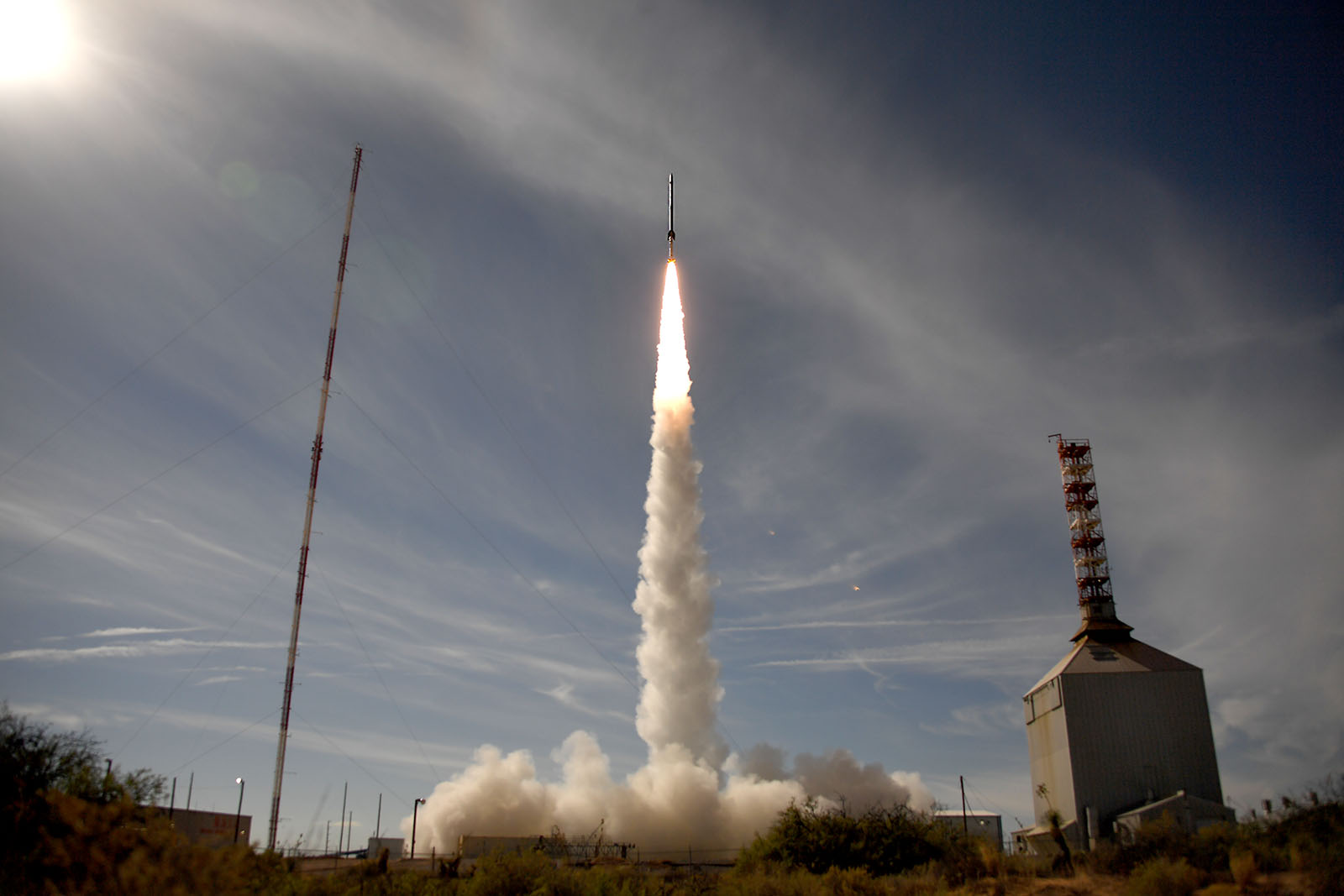40 Years Ago: STS-51A – “The Ace Repo Company”
Successfully deployed from the space shuttle Challenger during the February 1984 STS-41B mission, the Westar 6 and Palapa B2 communications satellites ended up in incorrect orbits due to failures of their upper stage rockets. During STS-51A in November 1984, Discovery’s second trip into space, the crew of Commander Frederick H. “Rick” Hauck, Pilot David M. […]
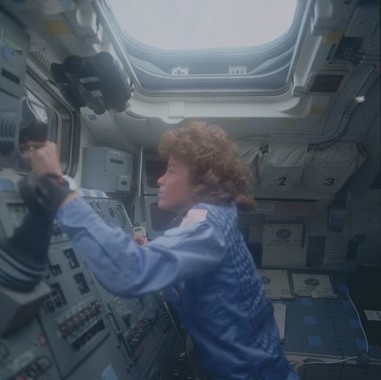
Successfully deployed from the space shuttle Challenger during the February 1984 STS-41B mission, the Westar 6 and Palapa B2 communications satellites ended up in incorrect orbits due to failures of their upper stage rockets. During STS-51A in November 1984, Discovery’s second trip into space, the crew of Commander Frederick H. “Rick” Hauck, Pilot David M. Walker, and Mission Specialists Joseph P. Allen, Anna L. Fisher, and Dale A. Gardner worked as a team to not only deploy two new satellites but also to retrieve the two wayward but otherwise healthy satellites for return to Earth. Hauck and Walker piloted Discovery to rendezvous with each satellite in turn, Allen and Gardner retrieved them during two spacewalks, and Fisher grappled and placed them in the payload bay for return to Earth. After refurbishment, both satellites returned to space.
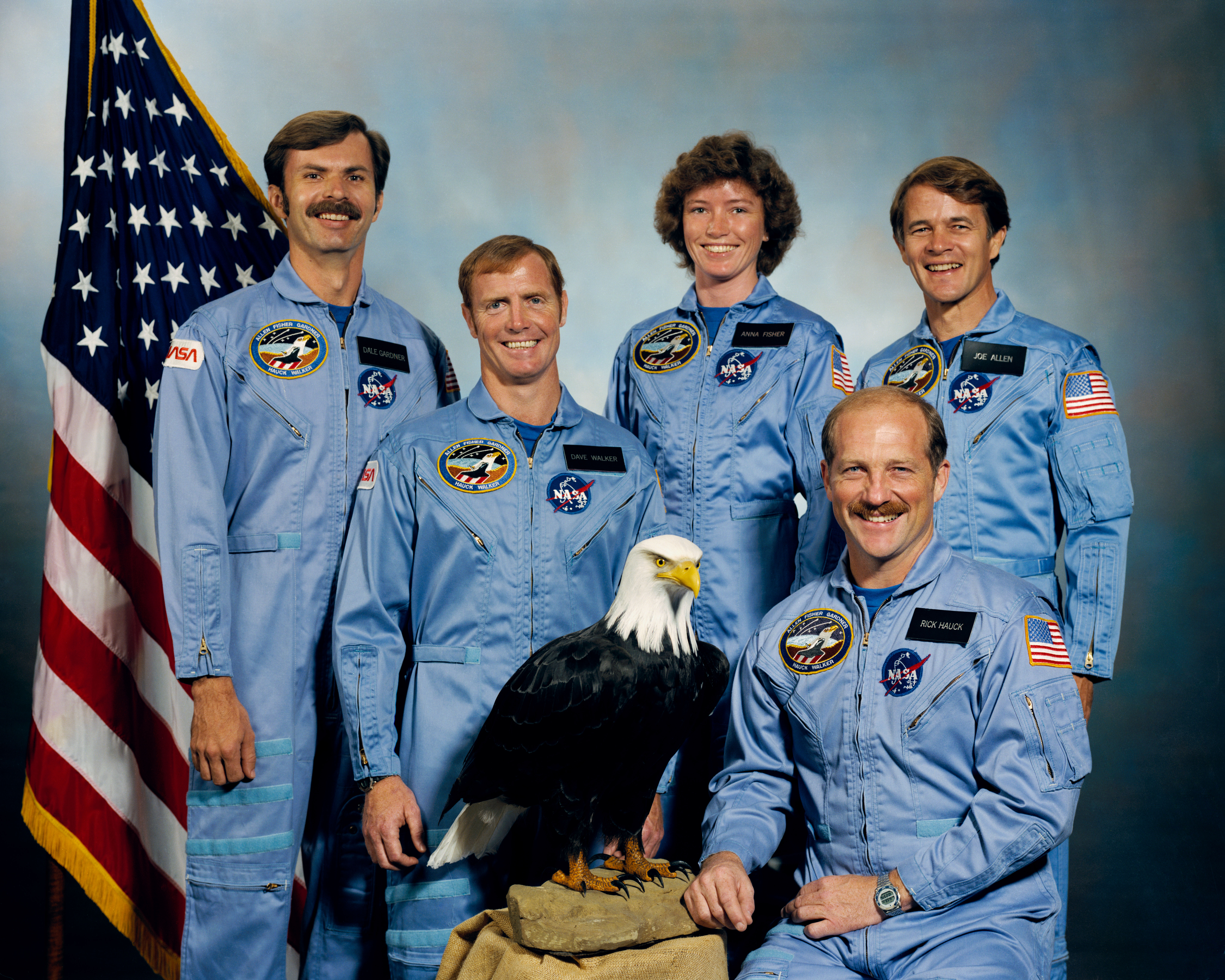

Left: The STS-51A crew of Dale A. Gardner, left, David M. Walker, Anna L. Fisher, Frederick “Rick” H. Hauck, and Joseph P. Allen. Right: The STS-51A crew patch.
NASA originally designated Hauck, Walker, Allen, Fisher, and Gardner as a crew in November 1983 and assigned them to STS-41H, a mission aboard Challenger planned for late September 1984 to either deploy the second Tracking and Data Relay Satellite (TDRS) or fly a classified payload for the Department of Defense. Due to ongoing problems with the Inertial Upper Stage that failed to put the first TDRS satellite in its correct orbit during STS-6, NASA canceled STS-41H and shifted Hauck’s crew to STS-51A. In February 1984, an agreement between NASA and the Canadian government added an as-yet unnamed Canadian payload specialist to the STS-51A crew. Managers later named the Canadian as Marc Garneau and reassigned him to STS-41G.
A shuffling of payloads following the STS-41D launch abort resulted in STS-51A now deploying the Anik D2 satellite for Canada and Leasat 1 (also known as Syncom IV-1) for the U.S. Navy. By early August, the launch date had slipped to Nov. 2, with NASA considering the possibility of retrieving the two wayward satellites from STS-41B, officially adding that task on Aug. 13. NASA selected Allen in 1967 as one of 11 scientist-astronauts, while the rest of the crew hail from the Class of 1978. Hauck, on his second mission after serving as pilot on STS-7, has the distinction as the first from his class to command a shuttle mission. Allen and Gardner had each flown one previous mission, STS-5 and STS-8, respectively, while for Walker and Fisher STS-51A represented their first flight. Fisher has the distinction as the first mother in space.
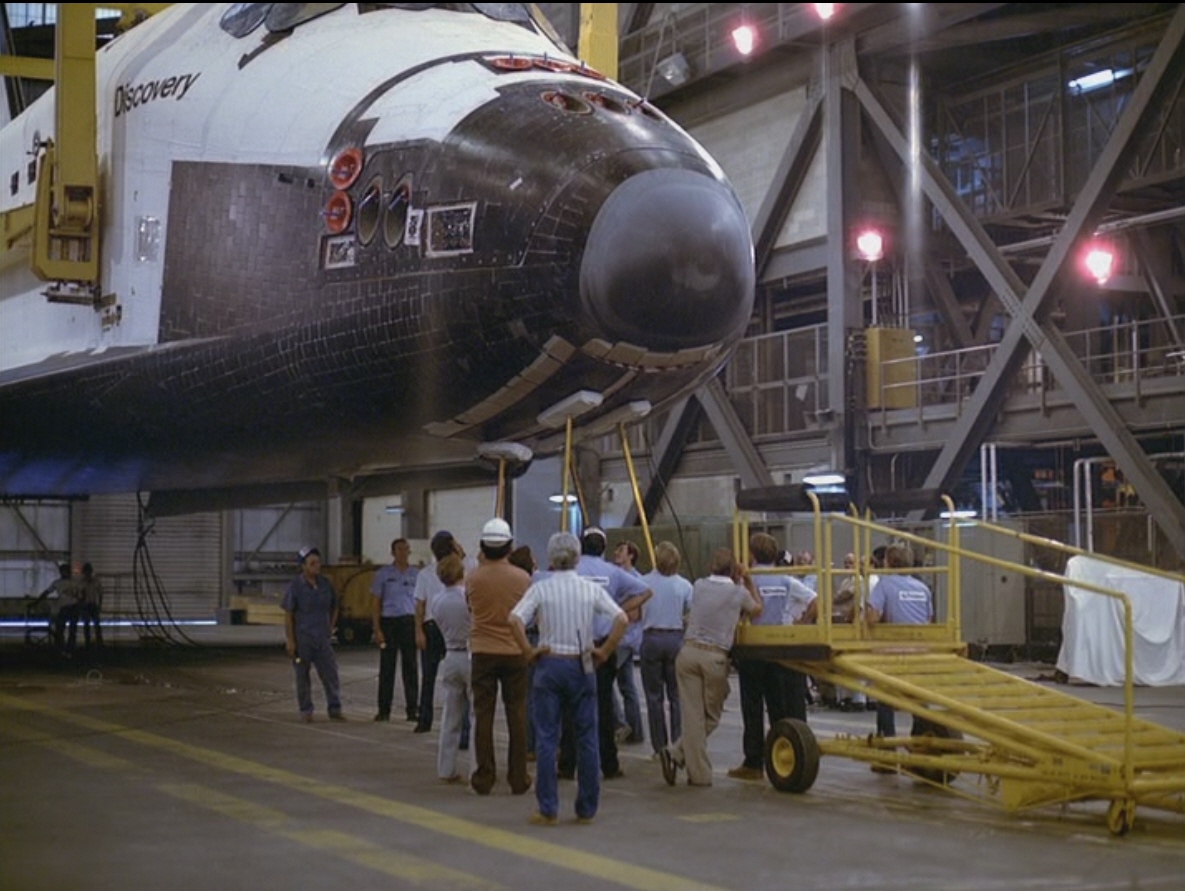
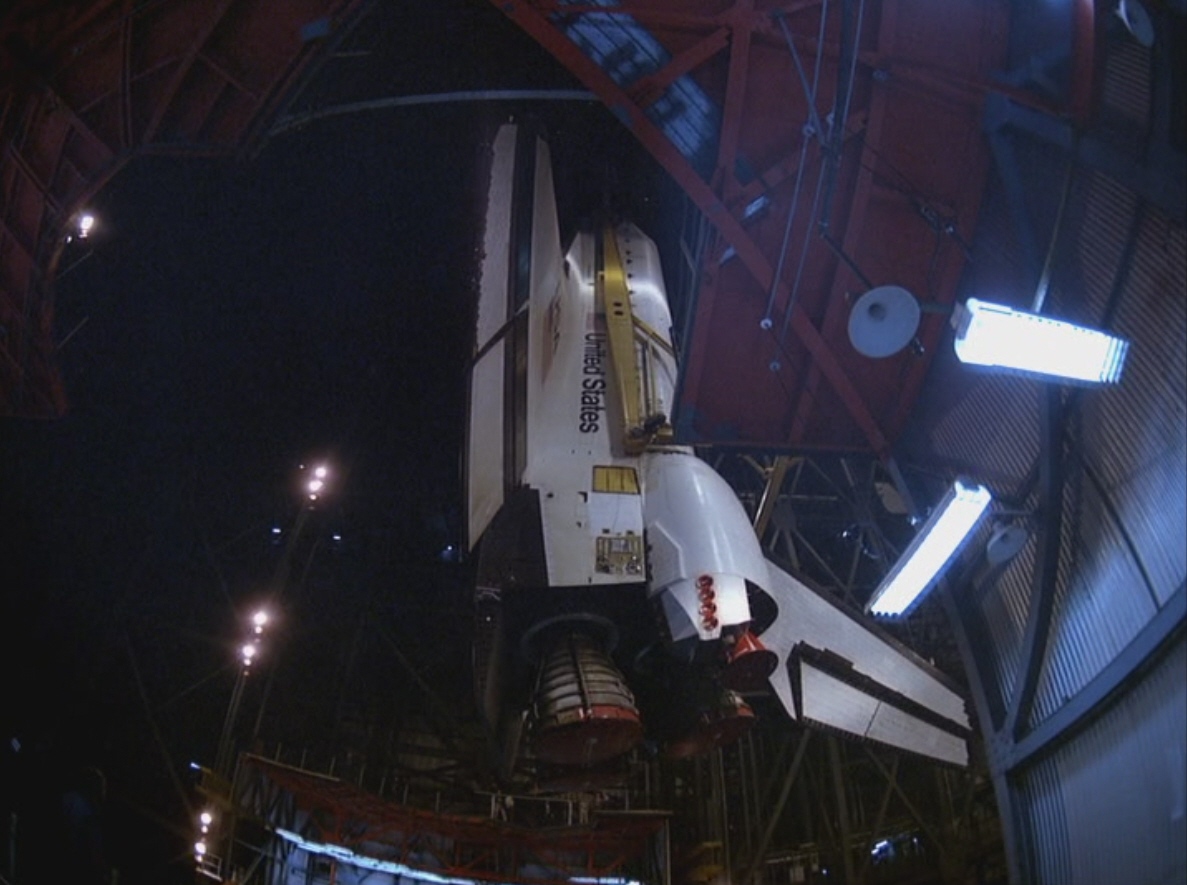
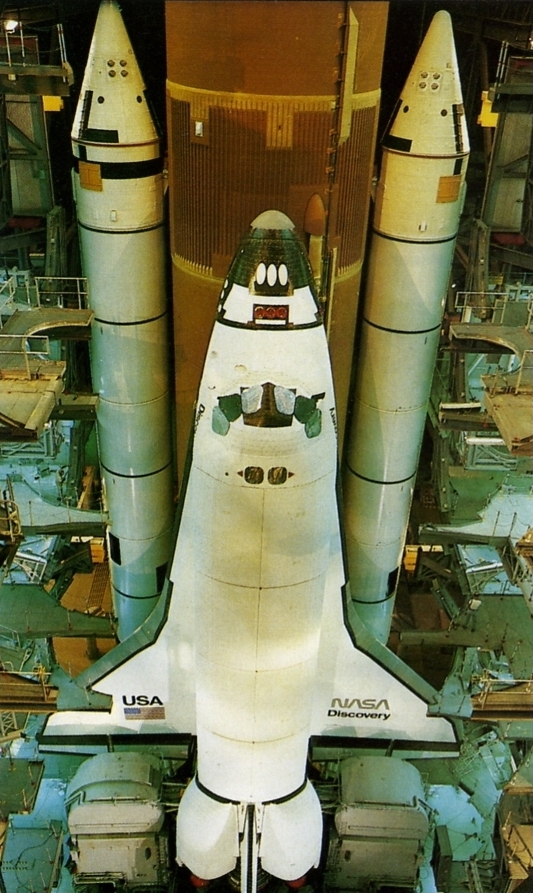
Left: After its arrival from the Orbiter Processing Facility, workers in the Vehicle Assembly Building (VAB) prepare to lift Discovery for mating with an External Tank (ET) and Solid Rocket Boosters (SRBs). Middle: Workers lift Discovery to stack it with the ET and SRBs. Right: The completed stack prepares to leave the VAB for the rollout to Launch Pad 39A.
Discovery arrived back at NASA’s Kennedy Space Center (KSC) in Florida on Sept. 10, returning from Edwards Air Force Base in California following the STS-41D mission. Workers towed it to the Orbiter Processing Facility (OPF) the next day to begin the process of refurbishing it for STS-51A. On Oct. 18, they rolled it over to the Vehicle Assembly Building (VAB), for stacking with an External Tank and twin Solid Rocket Boosters.
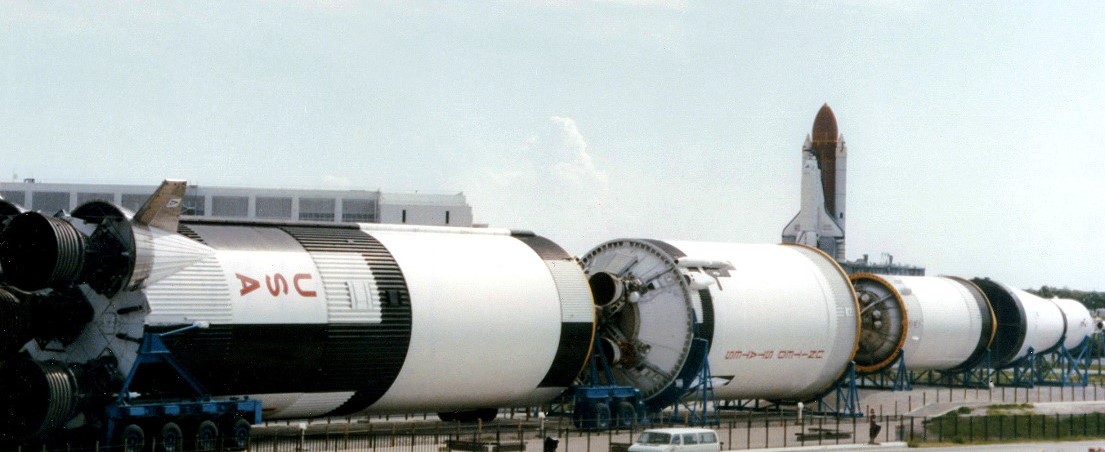
At NASA’s Kennedy Space Center in Florida, space shuttle Discovery rolls out to Launch Pad 39A, with the Saturn V rocket on display in the foreground.
The completed stack rolled out to Launch Pad 39A on Oct. 23. Two days later, the five-member STS-51A crew participated in the Terminal Countdown Demonstration Test, essentially a dress rehearsal for the actual countdown to launch. The crew returned to KSC on Nov. 5, the day the countdown began for a planned Nov. 7 launch. High upper-level winds that day forced a one-day delay.
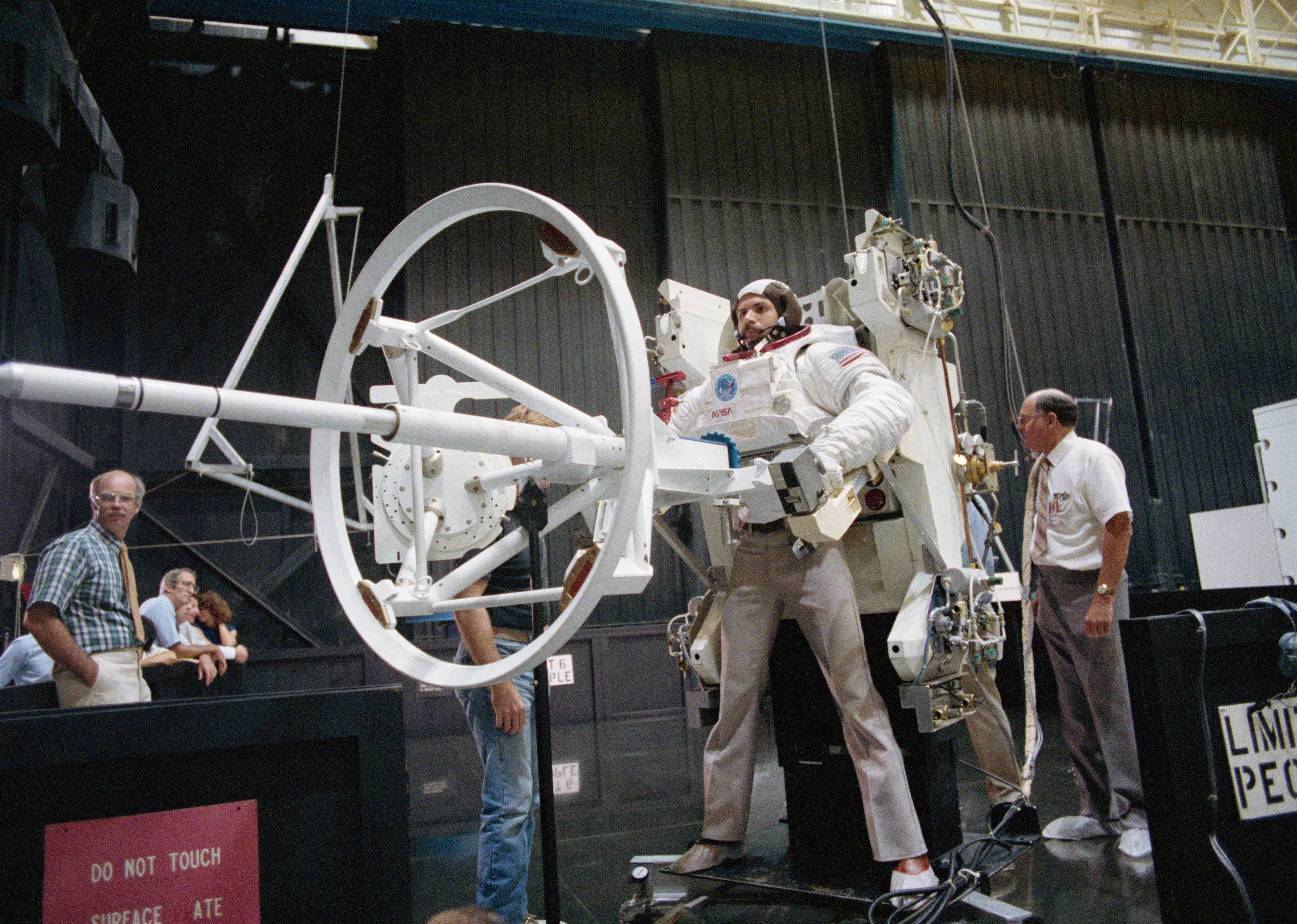
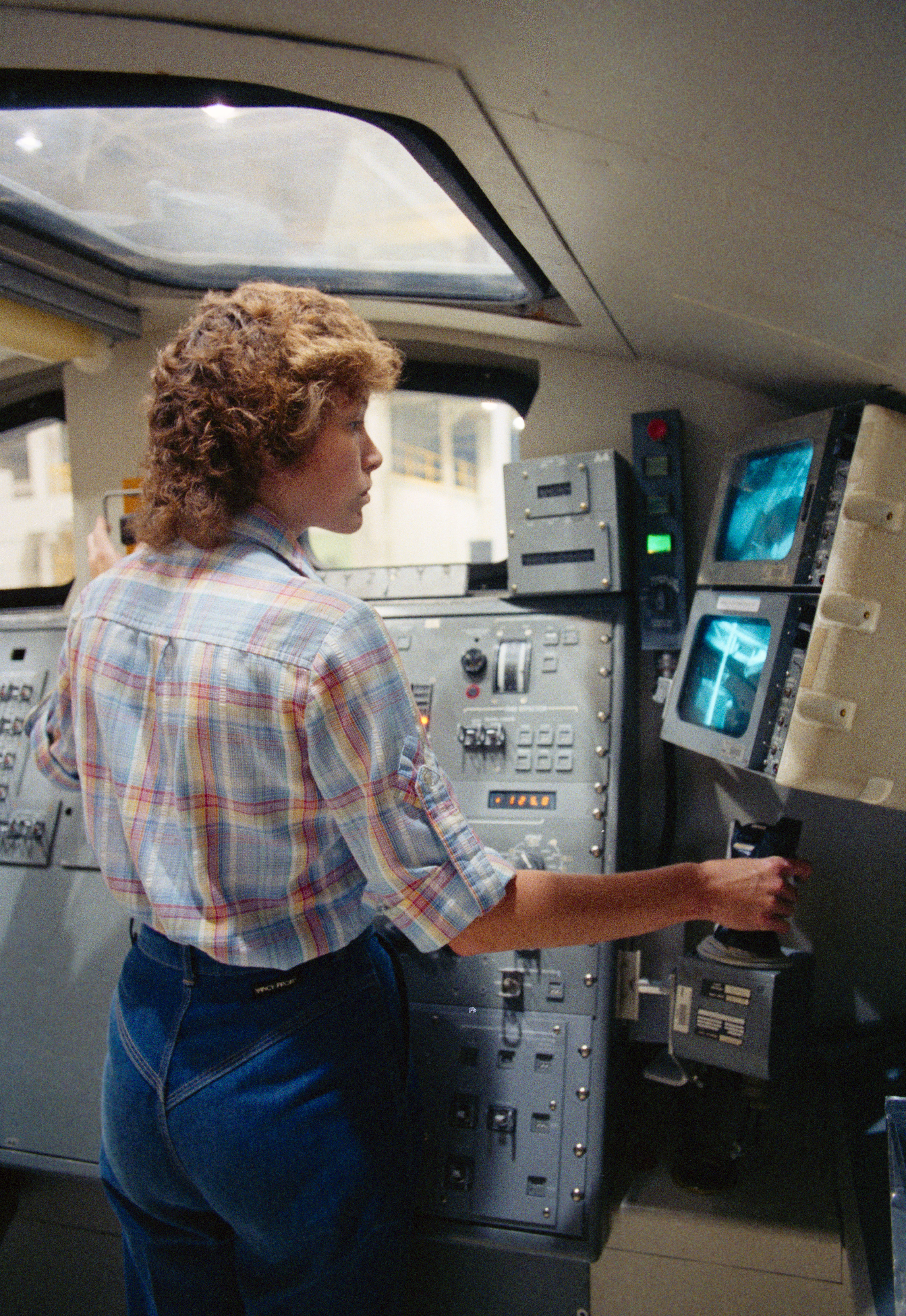
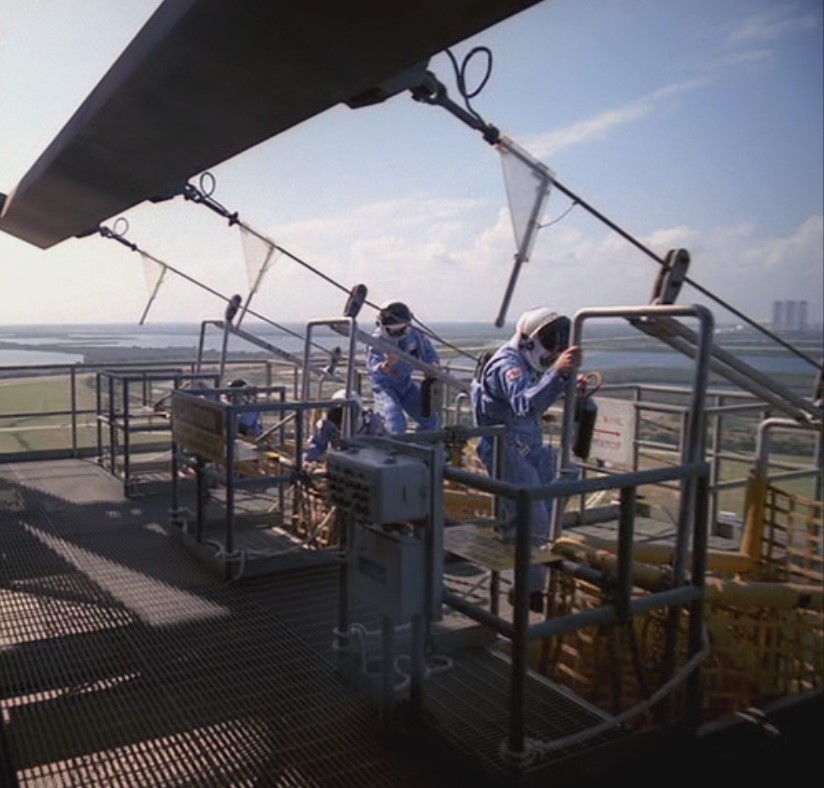
Left: STS-51A astronaut Dale A. Gardner trains for the capture of a satellite using the Apogee Kick Motor Capture Device. Middle: Astronaut Anna L. Fisher trains to use the Canadian-built Remote Manipulator System, or robotic arm. Right: As part of the Terminal Countdown Demonstration Test, the STS-51A astronauts practice rapid evacuation from the launch pad.
Following deployment from Challenger during STS-41B, the upper stages of both the Westar 6 and Palapa B2 satellites malfunctioned, leaving them in non-useable 160-by-600-mile-high orbits instead of the intended 22,300-mile-high geostationary orbits required for their normal operations. While both satellites remained healthy, their own thrusters could not boost them to the proper orbits. NASA devised a plan to have astronauts retrieve the satellites during spacewalks using the jetpack known as the Manned Maneuvering Unit (MMU), after which the shuttle’s Canadian-built Remote Manipulator System (RMS) or robot arm would grapple them and place them into the cargo bay for return to Earth. Astronauts had demonstrated the capability of the MMU during the STS-41C Solar Max satellite repair mission in April 1984 and NASA felt confident of its ability to capture and return Westar and Palapa.
In the weeks prior to STS-51A, ground controllers lowered the orbits of both satellites and reduced their spin rates from 50 to 1 rpm to enable capture by the shuttle astronauts. Engineers at NASA’s Johnson Space Center in Houston developed the Apogee Kick Motor Capture Device (ACD), otherwise known as the stinger due to its appearance, to allow an astronaut to capture the satellites while flying the MMU. Once relocated over the payload bay, a second astronaut would remove the satellite’s omnidirectional antenna with pruning shears and install an Antenna Bridge Structure (ABS) with a grapple fixture over the satellite’s main antenna dish. Allen would fly the MMU to capture Palapa, then he would switch roles with Gardner who would capture Westar. Fisher would use the RMS to grapple the satellites by this second fixture and lower them into specially built cradles to secure them into the payload bay.
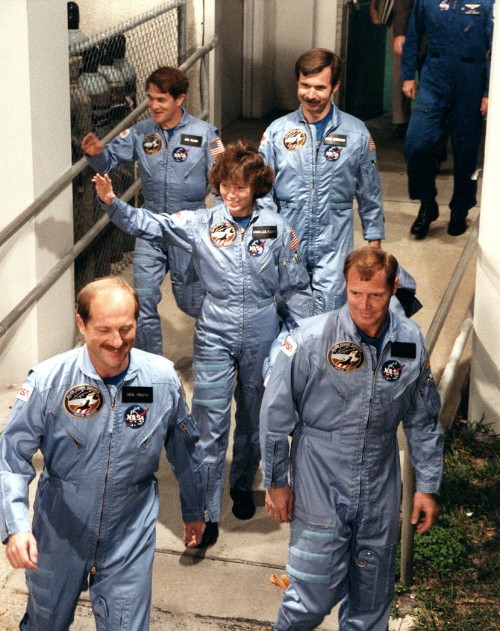
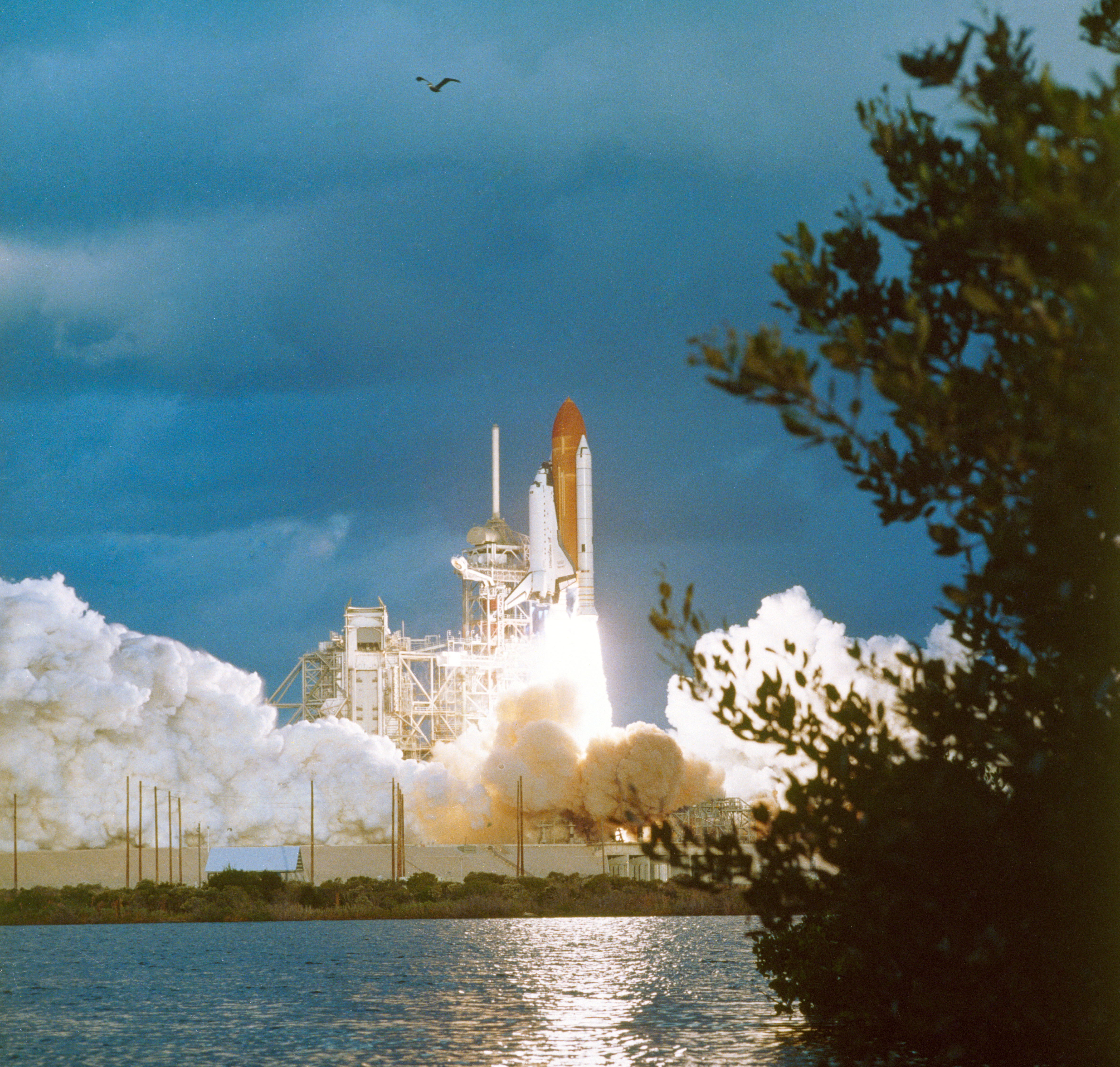
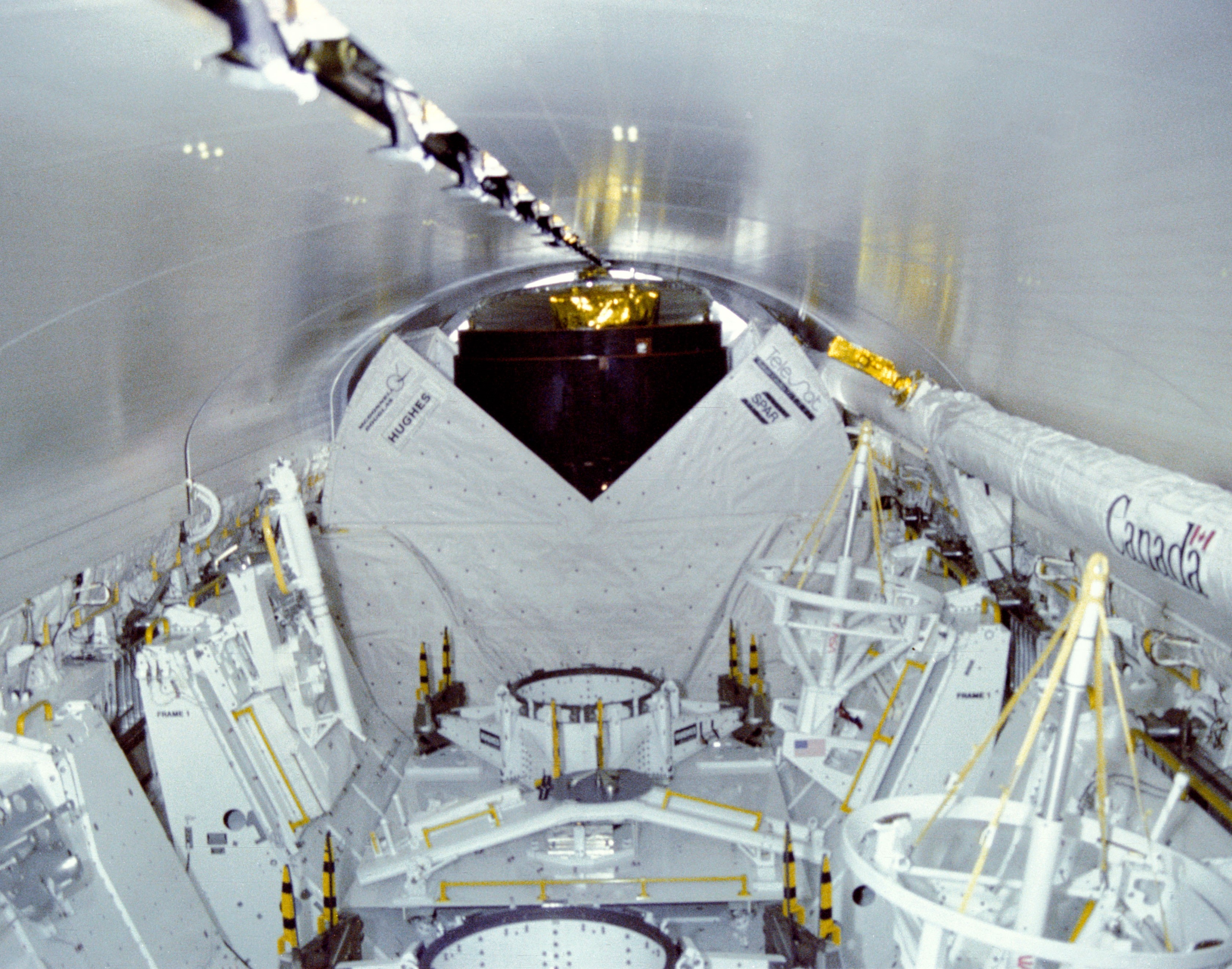
Left: The STS-51A crew leaves crew quarters on their way to Launch Pad 39A. Middle: Liftoff of Discovery on the STS-51A mission. Right: View inside Discovery’s payload bay shortly after orbital insertion – the top of Anik D2 is visible, with Leasat 1 hidden behind it.
Space shuttle Discovery roared off KSC’s Launch Pad 39A on Nov. 8, 1984, to begin the STS-51A mission and mark the orbiter’s first return to space. For Gardner, launch day coincided with his 36th birthday. The launch took place just 26 days after the landing of the previous mission, STS-41G, a then record-breaking turnaround time between shuttle flights. Eight and a half minutes after liftoff, Discovery and its five-member crew reached space and shortly thereafter settled into a 182-by-172-mile-high initial orbit. As their first order of business, the crew checked out the RMS to ensure its functionality for the satellite captures later in the mission. They also performed the first rendezvous burn to begin the approach to the Palapa satellite. The crew then settled down for its first night’s sleep in orbit.
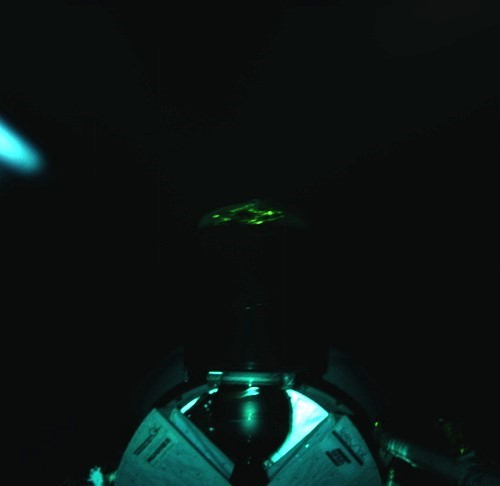
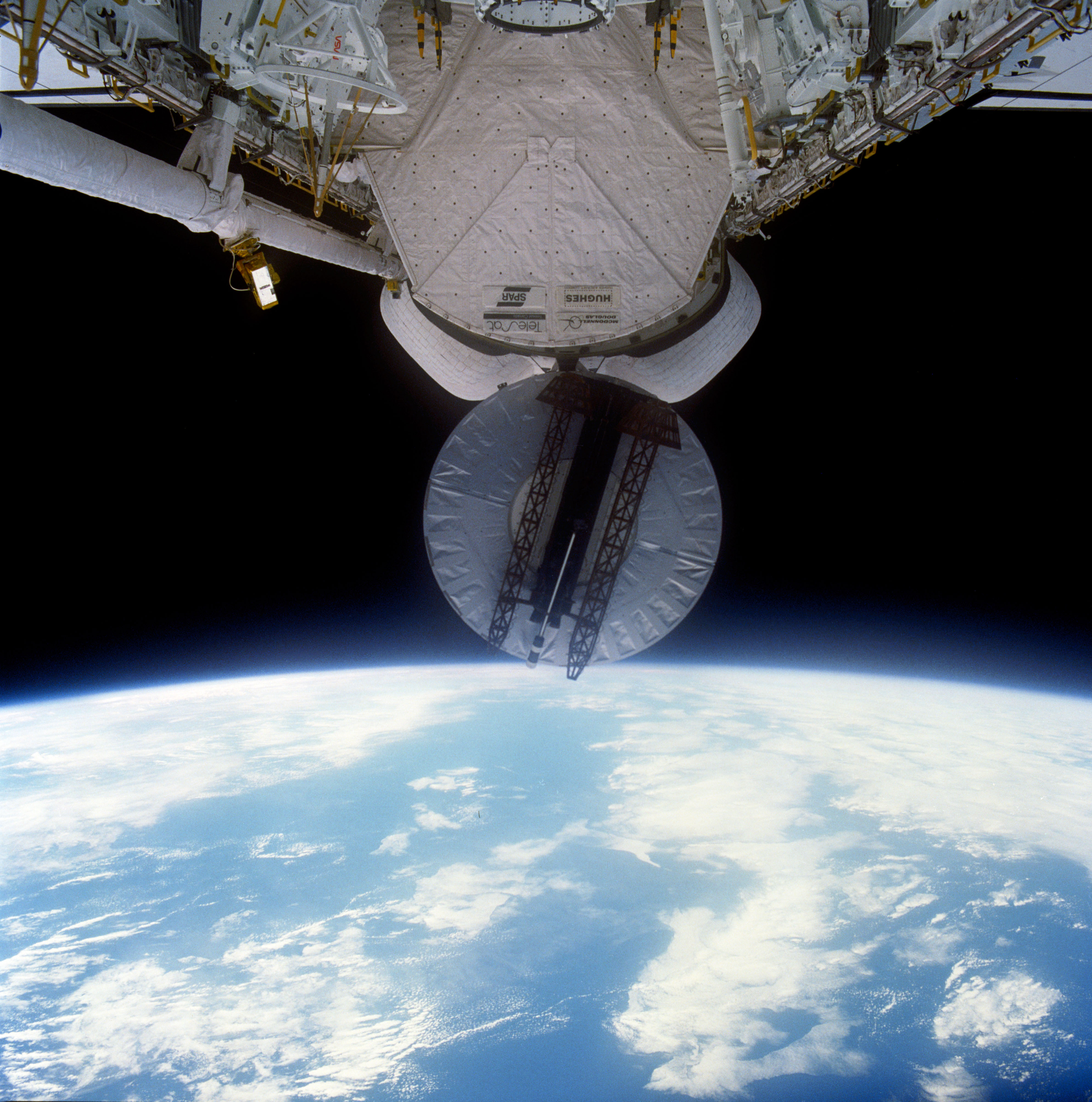

Left: Nighttime deploy of the Anik D2 satellite. Middle: Deploy of the Leasat 1 satellite. Right: Leasat 1 as it departs from Discovery.
The primary activity of the second flight day involved Allen deploying the 2,727-pound Anik D2 satellite via a spring ejection mechanism, occurring on time and with no issues. The crew also circularized the shuttle’s orbit at 186 miles. The next day, Gardner deployed the 17,000-pound Leasat 1 using the Frisbee style mechanism used to deploy the first Leasat during STS-41D two months earlier. With the satellite deployments complete, the crew began to focus on the rendezvous maneuvers to bring them close to the Palapa B2 satellite while Allen and Gardner verified the functionality of their spacesuits. On flight day 4, the astronauts reduced the pressure inside the shuttle from 14.7 pounds per square inch (psi) to 10.2 psi in order to prevent the spacewalking astronauts from developing the bends inside the spacesuits that operated at 4.3 psi.

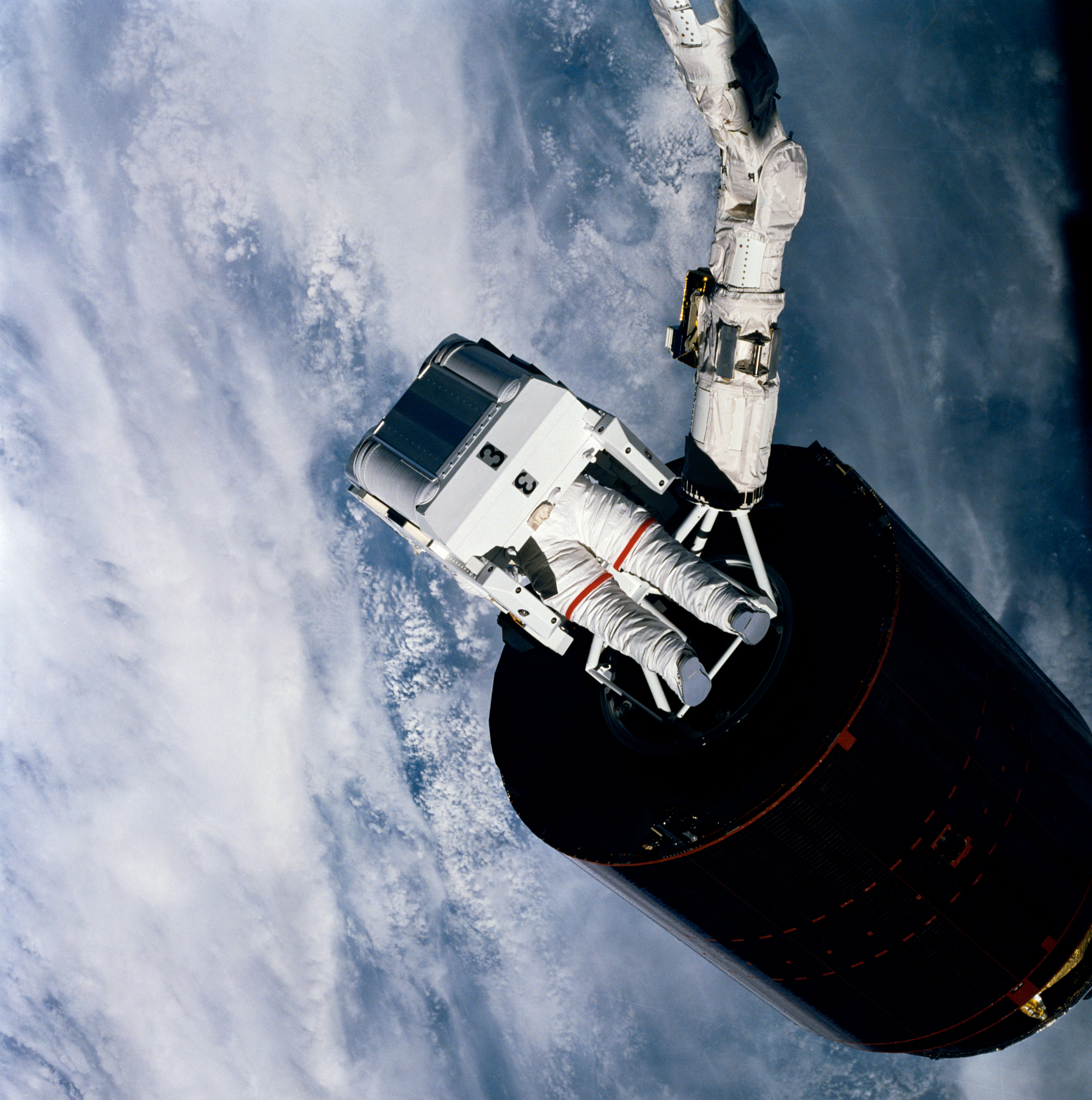
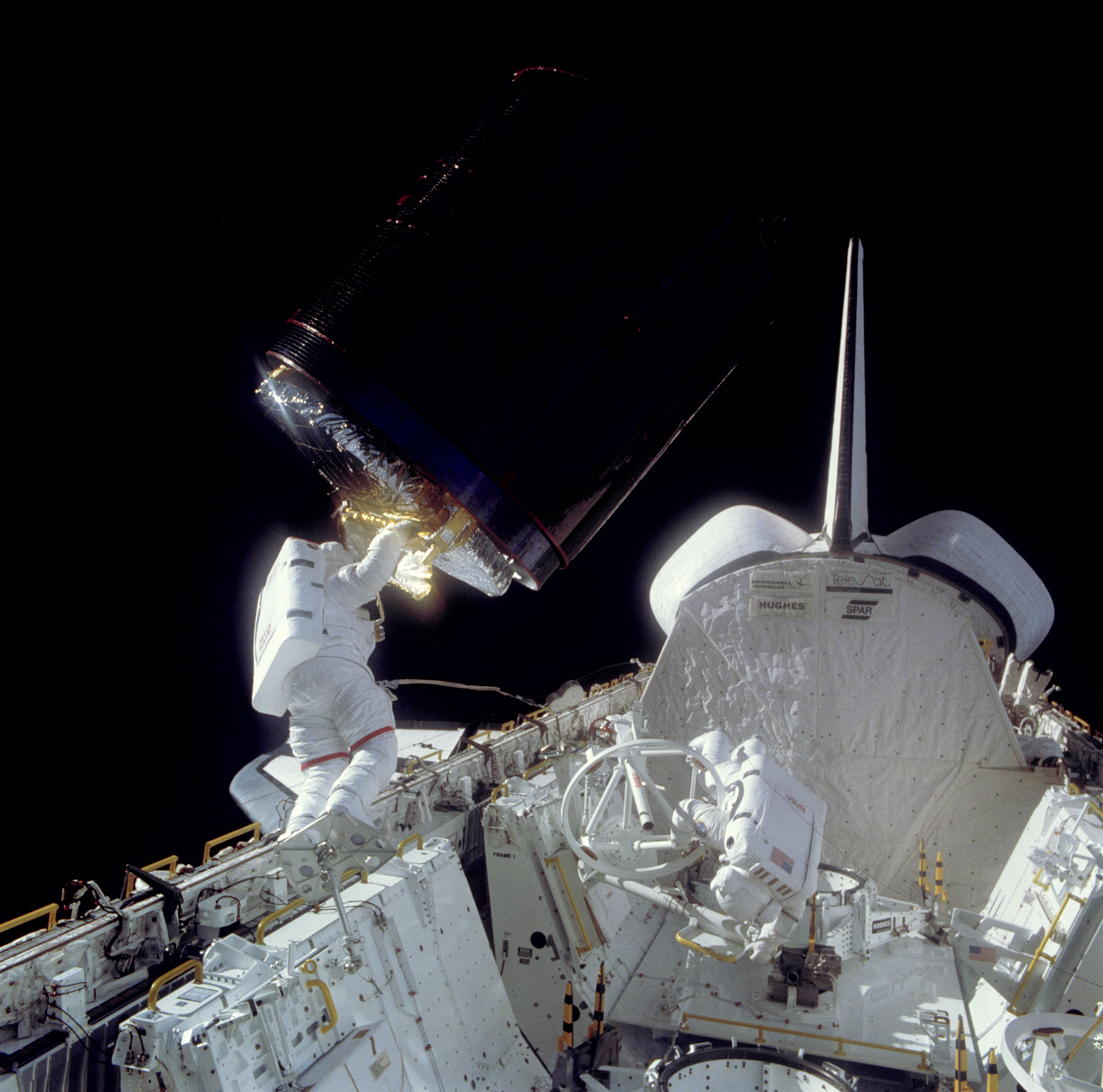
Left: During the first spacewalk, Jospeh P. Allen captures the Palapa B2 satellite. Middle: Anna L. Fisher grasps Allen and Palapa with the Remote Manipulator System, or robotic arm. Right: Allen, left, and Dale A. Gardner prepare to place Palapa in its cradle in the payload bay.
On the fifth mission day, after Hauck and Walker piloted Discovery to within 35 feet of Palapa, Allen and Gardner exited the airlock to begin the spacewalk portion of the satellite capture. Allen donned the MMU mounted on the side wall of the cargo bay, attached the stinger to its arms, and flew out to Palapa. Once there, he inserted the stinger into the satellite’s Apogee Kick Motor bell and using the MMU’s attitude control system stopped Palapa’s spin.
Fisher then steered the RMS to capture a grapple fixture mounted on the stinger between Allen and the satellite. She then maneuvered them over the payload bay where Gardner waited to remove its omnidirectional antenna and install the bridge structure. However, Gardner could not attach the ABS to the satellite due to an unexpected clearance issue on the satellite. Using a backup plan, Allen undocked from the stinger, leaving it attached to the satellite as well as the RMS, and stowed the MMU in the payload bay. With Allen now holding the satellite by its antenna, Gardner attached an adaptor to the bottom end of the satellite to secure it in its cradle in the payload bay. This plan worked and Allen and Gardner completed the spacewalk in exactly six hours.
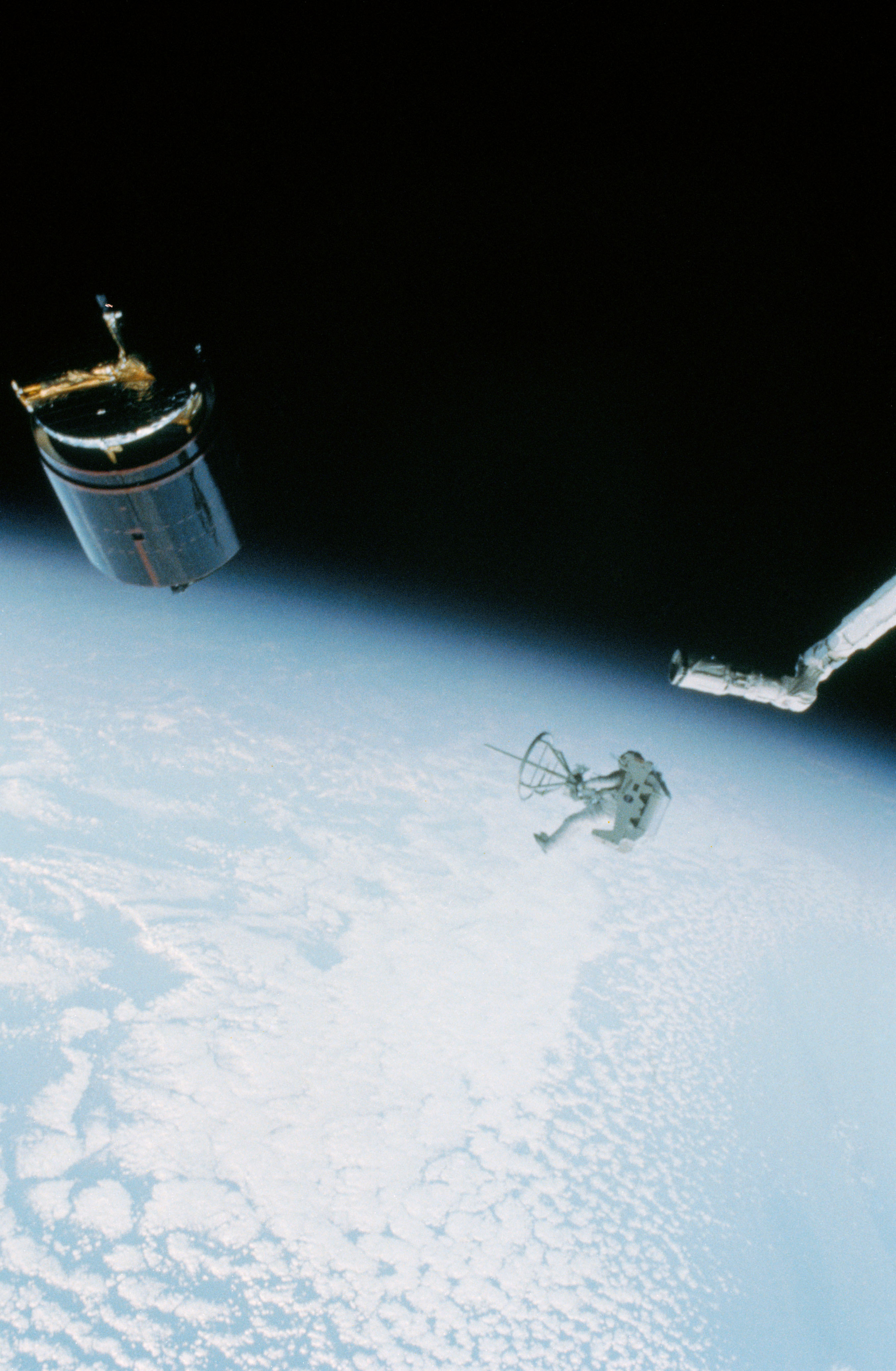

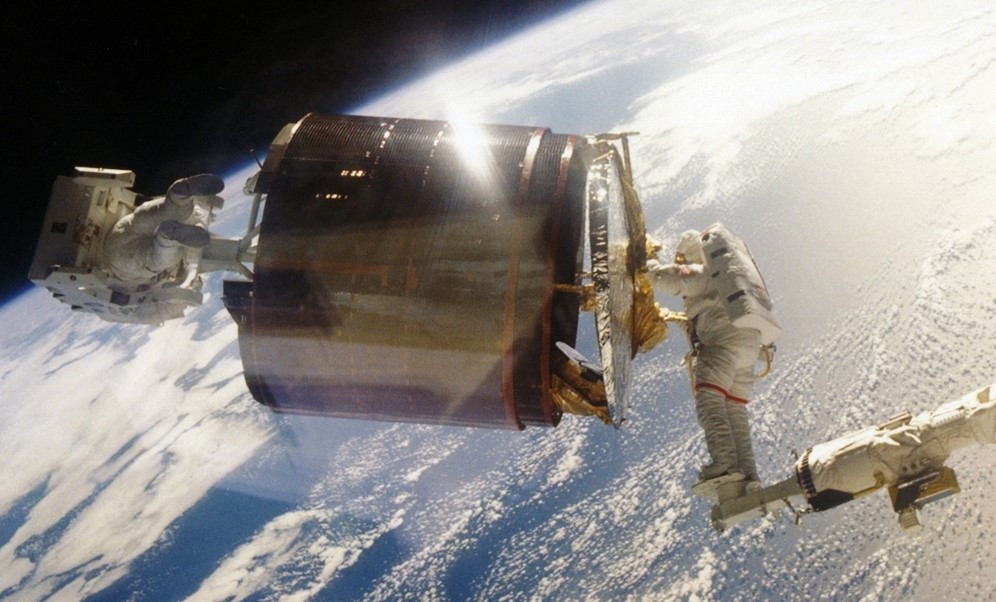
Left: Dale A. Gardner flies the Manned Maneuvering Unit to capture Westar 6 during the second spacewalk. Middle: Anna L. Fisher operates the Remote Manipulator System from Discovery’s aft flight deck. Right: Gardner, left, and Joseph P. Allen maneuver Westar prior to placing it in its cradle in the payload bay.
Between the two spacewalk days, the crew serviced the spacesuits, conducted routine maintenance on the shuttle, and prepared for the second rendezvous, this time to retrieve Westar. Allen and Gardner switched roles for the second spacewalk on flight day seven, with Gardner flying the MMU to capture Westar. The astronauts repeated the procedure from the first spacewalk, except for not removing the omni antenna so they could use it as a handhold. With Westar secured in the payload bay, Gardner and Allen completed the second spacewalk in 5 hours and 42 minutes.

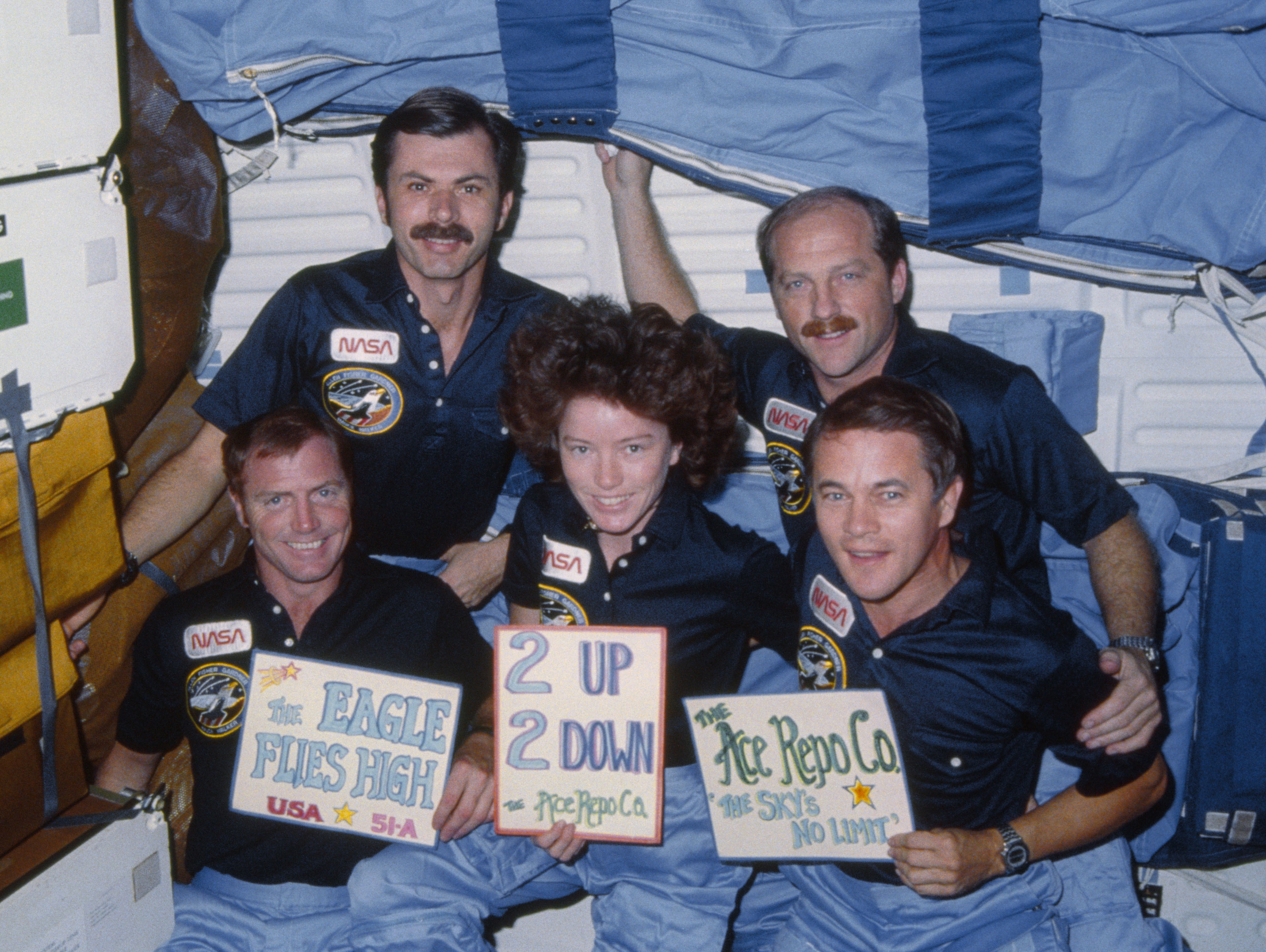
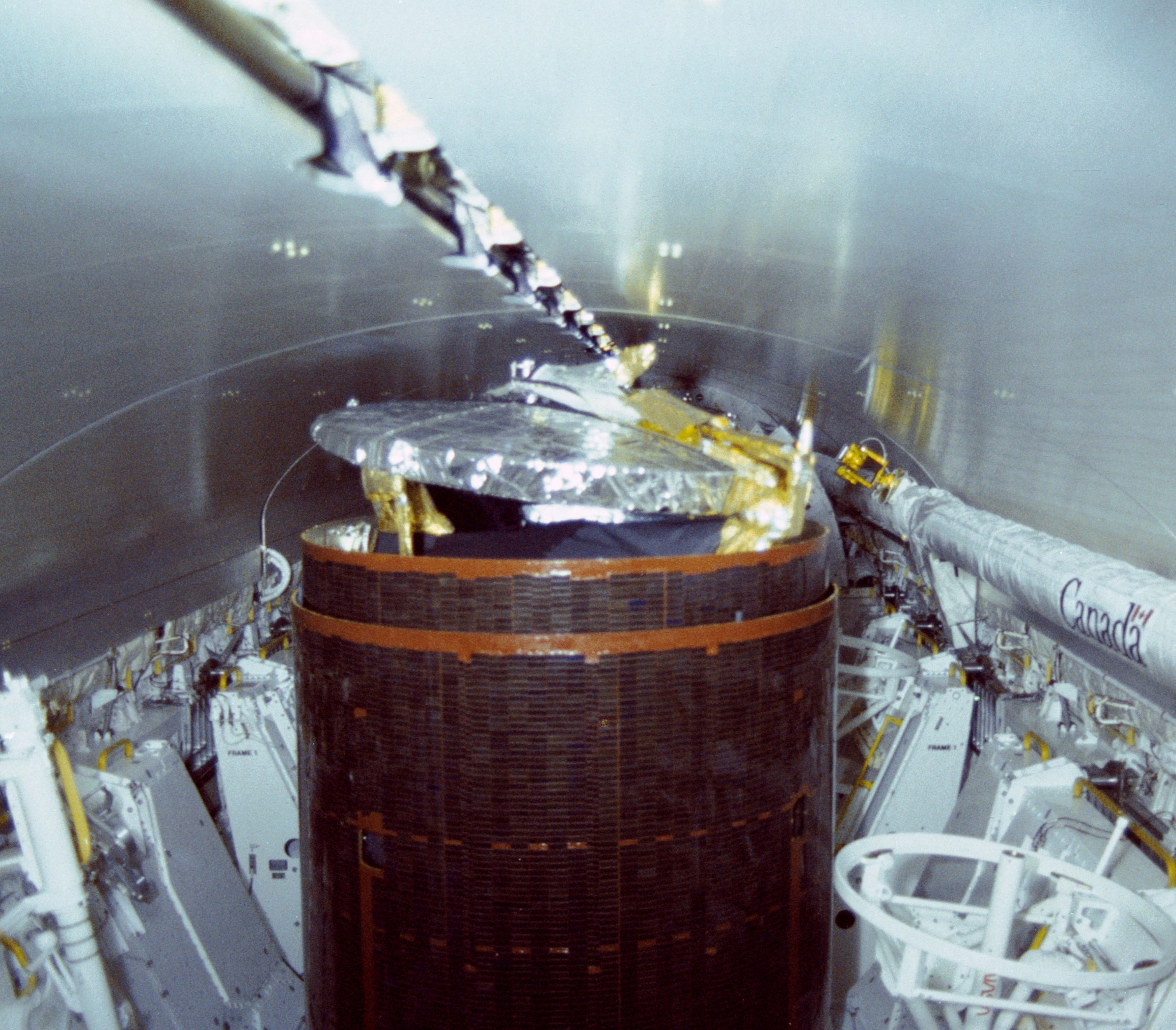
Left: Dale A. Gardner, left, and Joseph P. Allen pose at the end of the Remote Manipulator System controlled by Anna L. Fisher, holding a For Sale sign above the two retrieved satellites secured in Discovery’s payload bay. Middle: Inflight photo of the STS-51A crew after the successful satellite retrievals. Right: View inside Discovery’s payload bay shortly before the deorbit burn, with Westar 6 in the foreground and Palapa B2 behind it.
During their final full day in space, Discovery’s crew repressurized the shuttle’s cabin to 14.7 psi and tidied the cabin in preparation for reentry. On Nov. 16, the astronauts closed the payload bay doors and fired the Orbital Maneuvering System engines to begin the descent back to Earth. Hauck guided Discovery to a smooth landing at KSC, completing a flight of 7 days, 23 hours, and 45 minutes. The crew had traveled nearly 3.3 million miles and completed 127 orbits around the Earth. The next day, workers towed Discovery to the OPF to begin preparing it for its next flight, STS-51C in January 1985.
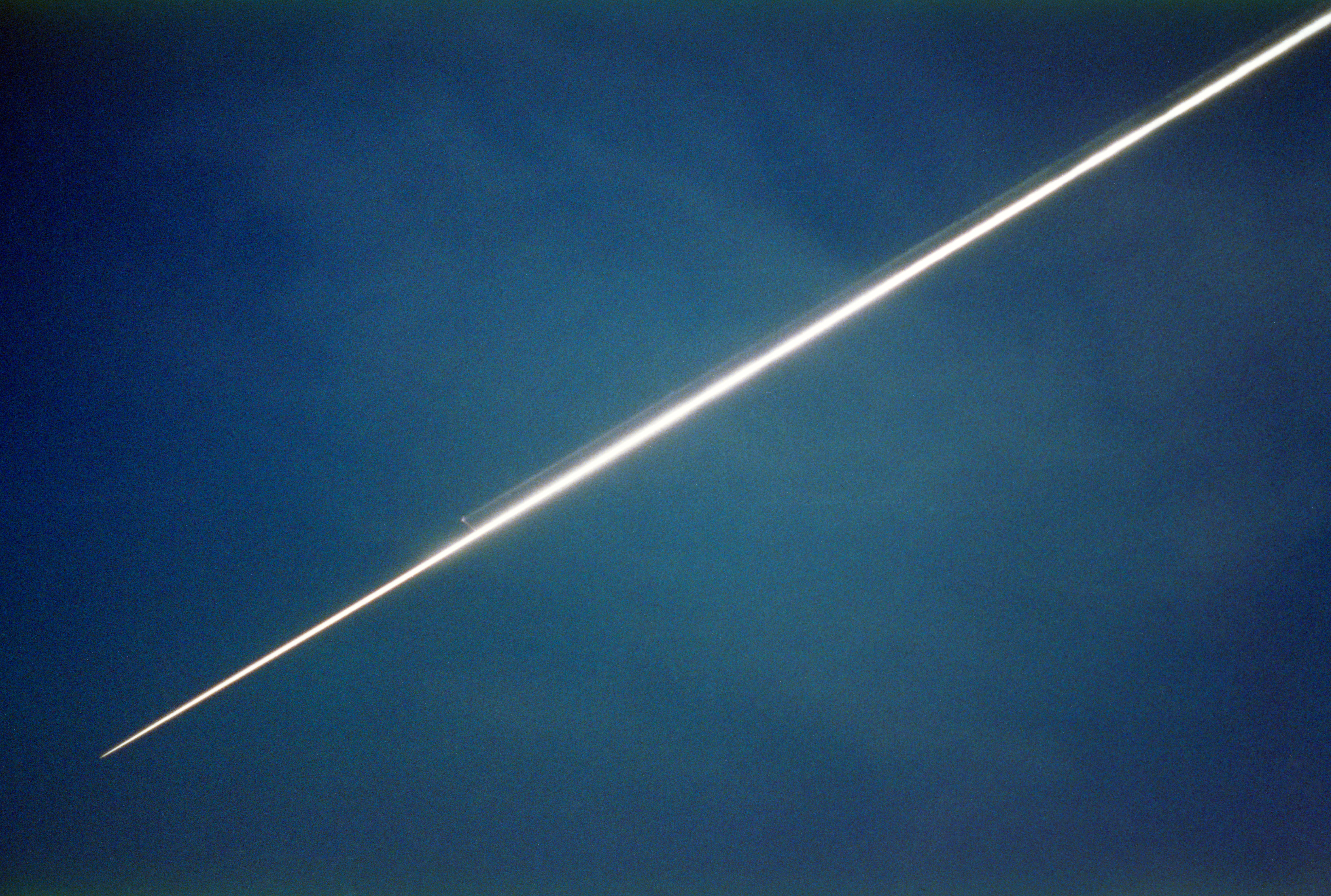

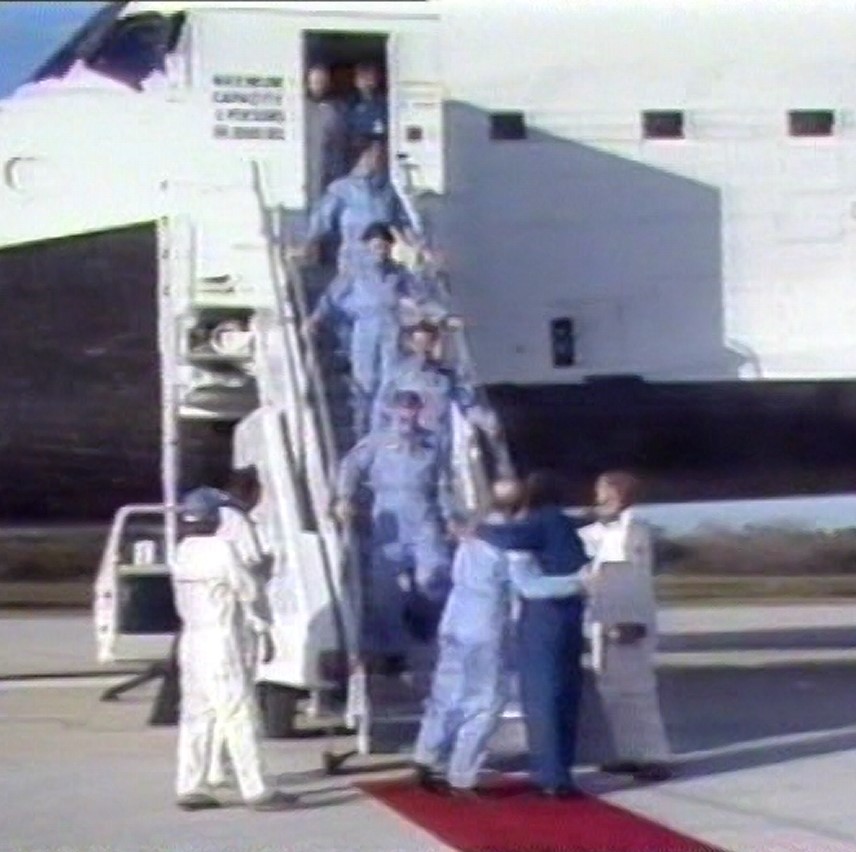
Left: Discovery streaks over Houston on its way to land at NASA’s Kennedy Space Center (KSC) in Florida. Middle: Discovery moments before touchdown at KSC. Right: NASA officials greet the STS-51A astronauts as they exit Discovery.
As a postscript, STS-51A marked the last flight to use the MMUs, and the last untethered spacewalks until 1994 when STS-64 astronauts tested the Simplified Aid for EVA Rescue (SAFER). All subsequent spacewalks on the space shuttle and the International Space Station used safety tethers, with the SAFER as a backup in case a crew member disconnects from the vehicle.
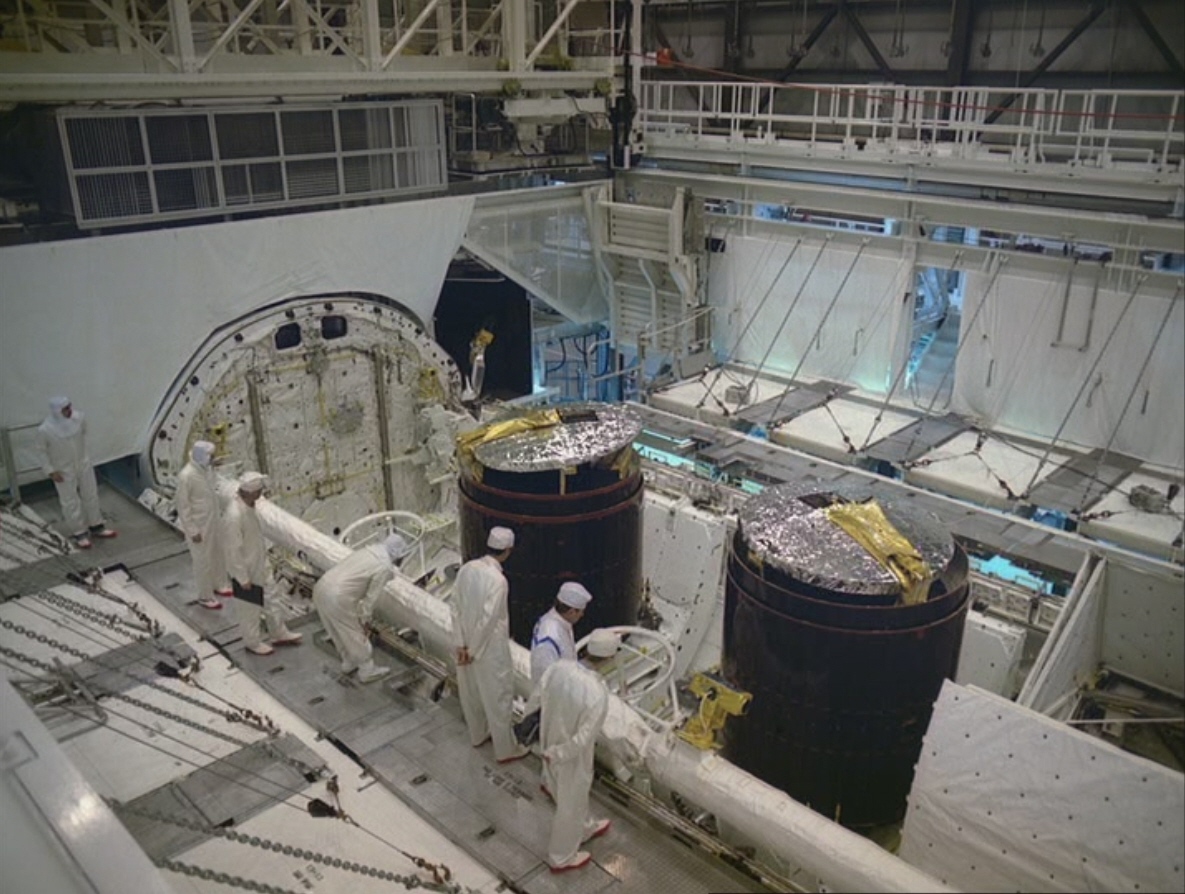
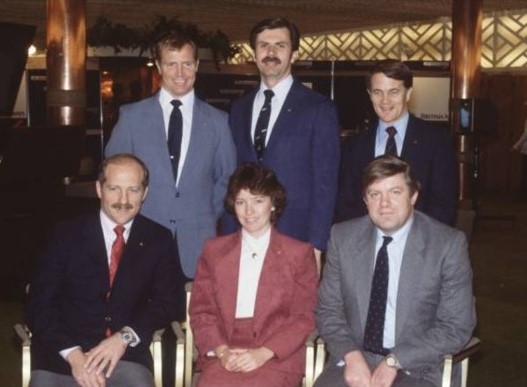
Left: In the Orbiter Processing Facility at NASA’s Kennedy Space Center in Florida, workers inspect the Westar 6, left, and Palapa B2 satellites in Discovery’s payload bay. Right: The STS-51A crew, with Lloyd’s of London representative Stephen Merritt, sitting at right, during their visit to London.
On Dec. 7, 1984, in a ceremony at the White House, President Ronald W. Reagan presented the STS-51A crew with the Lloyd’s of London – the company had insured the two satellites they returned to Earth – Silver Medal for Meritorious Salvage Operations. Fisher has the distinction as only the second woman to receive that award. In February 1985, Lloyd’s flew the crew to London on the Concorde for a week of activities, including addressing the Lloyd’s underwriters and tea with Prince Charles at Kensington Palace.
Hong Kong-based AsiaSat purchased the Westar 6 satellite, refurbished it, and relaunched it as AsiaSat 1 on April 7, 1990, on a Chinese CZ-3 rocket. Title to the Palapa B2 satellite returned to Indonesia after its relaunch as Palapa B2R on April 13, 1990, aboard a Delta rocket.
Read recollections of the STS-51A mission by Hauck, Allen, and Fisher in their oral histories with the JSC History Office. Enjoy the crew’s narration of a video about the STS-51A mission.
What's Your Reaction?































